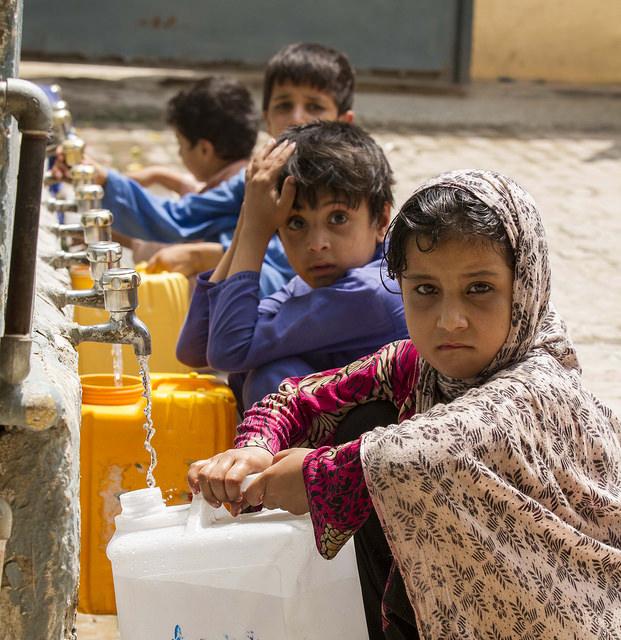Health officials in Pakistan say an outbreak of extensively drug-resistant (XDR) typhoid that began in 2016 has now affected more than 5,200 people, according to an update from the World Health Organization (WHO).
The circulating strain of XDR Salmonella enterica serovar Typhi, which is resistant to five classes of antibiotics, was first reported in the Hyderabad district of Sindh province in 2016 and has been spreading throughout the province since then. After health officials formally agreed to case definitions for non-resistant, multidrug-resistant (MDR), and XDR typhoid, a review of typhoid cases reported from Nov 1, 2016 through Dec 9, 2018 identified 5,274 XDR cases in Sindh province.
The majority of cases (69%) have been reported in Karachi, the capital city of Sindh province, and 27% have been reported in Hyderabad district. Four percent are in other districts of the province. In addition, six cases of XDR typhoid have been reported in people believed to have travelled to Pakistan. One of the travelers is from the United Kingdom, and the other five are from the United States.
Salmonella Typhi causes typhoid fever, a life-threatening and highly infectious illness that affects more than 21 million people in the developing world and tends to spread in areas with poor sanitation. The WHO says the risk of acquiring XDR typhoid in Pakistan is high because of insufficient access to clean water and poor sanitation and hygiene.
Antibiotic resistant Salmonella Typhi strains have become increasingly prevalent in recent decades, and there have been outbreaks of MDR typhoid in several countries. There have also been a handful of reported infections with XDR strains. But this is the first report of a widespread outbreak of XDR typhoid.
XDR strain contains additional resistance genes
The circulating strain of XDR Salmonella Typhi belongs to the H58 haplotype, which is common in part of Asia and Africa. H58 strains are commonly resistant to the first-line antibiotics for typhoid fever treatment—chloramphenicol, ampicillin, and trimethoprim-sulfamethoxazole—and in Pakistan have also shown increasing resistance to fluoroquinolones. But the cases of typhoid fever that began to emerge in the Hyderabad district of Sindh province in November 2016 were additionally resistant to ceftriaxone and even more difficult to treat.
In February 2018, an analysis of more than 300 XDR Salmonella typhi isolates from Sindh by British and Pakistani scientists identified resistance genes for fluoroquinolones and ceftriaxone on a mobile piece of DNA called a plasmid. The scientists theorize that the plasmid, which can spread resistance genes within and between different species of bacteria, may have originated in Escherichia coli and was acquired by Salmonella typhi in Pakistan prior to the emergence of the XDR strain.
The authors of the study said the rapid emergence of XDR typhoid in Pakistan marked a "sentinel event" in the evolution of antibiotic resistance in Salmonella Typhi and highlighted the public health threat posed by mobile resistance elements.
"Antibiotics save millions of lives annually, but the apparent ease and rapidity by which life-threatening bacteria such as S. Typhi can develop resistance severely limit their efficacy," they wrote.
Currently, azithromycin is the only remaining reliable and affordable oral antibiotic for treatment of XDR typhoid in Pakistan. The WHO says patients with suspected typhoid fever should be tested microbiologically to confirm Salmonella Typhi and determine antimicrobial susceptibility, and recommends increased surveillance of typhoid fever to monitor for new and emerging resistance. The agency also recommends vaccination in response to confirmed typhoid outbreaks.
The Pakistani government has already begun a mass vaccination campaign in Sindh province in response to the XDR typhoid outbreak, according to the WHO update. Since August 2017, approximately 118,000 children aged 6 months to 10 years in Hyderabad have received the Vi-polysaccharide typhoid vaccine or the typhoid conjugate vaccine. The government has also implemented water purification and sanitation activities, carried out community and school awareness campaigns on safe hygiene and sanitation practices, and created a national XDR typhoid taskforce.
See also:
Dec 27 WHO Disease outbreak news update
Feb 20 mBio study
Feb 20 CIDRAP News story "Study: XDR typhoid in Pakistan carries added resistance genes"
















